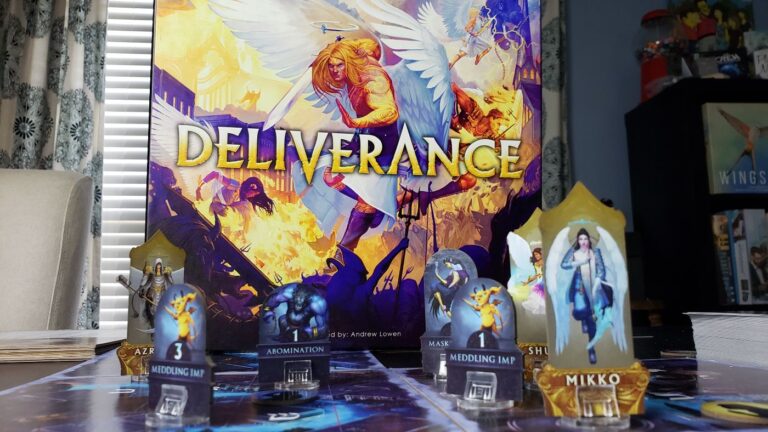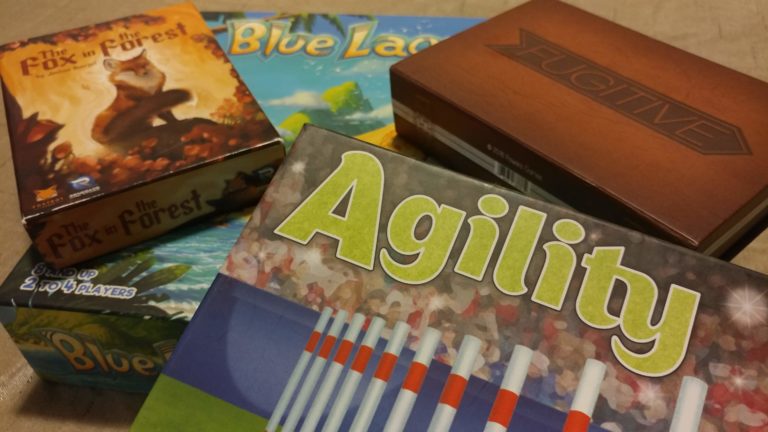Trick-taking games are hot and have been for a while. This style of card game are rooted in games that my grandparents played with a common deck of cards. In recent years, designers have been toying with the trick-taking mechanic and are regularly bringing something new to the table.
In 2019, The Crew from KOSMOS was a hit when it sent players on space missions to work as a team using the trick-taking mechanic. This card game went on to win the Kennerspiel des Jarhes in 2020. While I enjoyed the co-operative gameplay of The Crew, my family thought it was “just fine”.
Inside Job is another co-operative trick-taking game from KOSMOS. I’m here to convince you that it’s a better game than The Crew and offers some fantastic tension every time it hits the table.
Welcome to the Agency
Inside Job is trick-taking meets deduction for up to 5 players. Each player is given an identity card at the start of the game. This card will be an agent card or an insider card. Players keep their identity a secret until a win condition has been met.
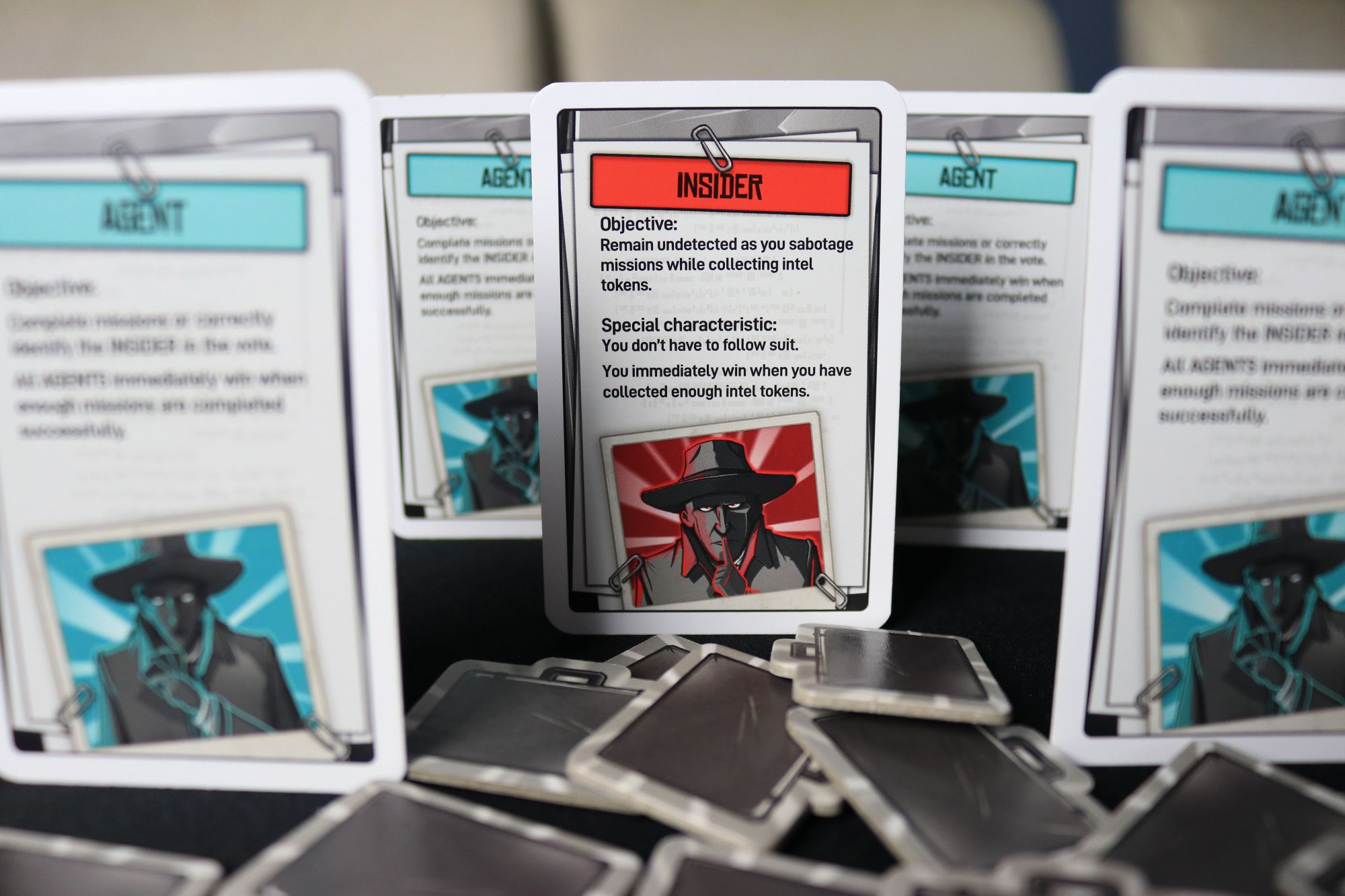
There’s always a single insider at the table that’s trying to go undetected and possibly cause players to lose “missions” throughout the game. This requires some finesse since most games result in everyone at the table looking suspicious at some point in the game.
Depending on how many players are involved, the game will be 8 to 10 rounds with a mission card guiding players during the round. The agents want to follow the mission instructions to win as many missions as possible. The single insider just needs to win a specific number of tricks before the number of mission cards are won.
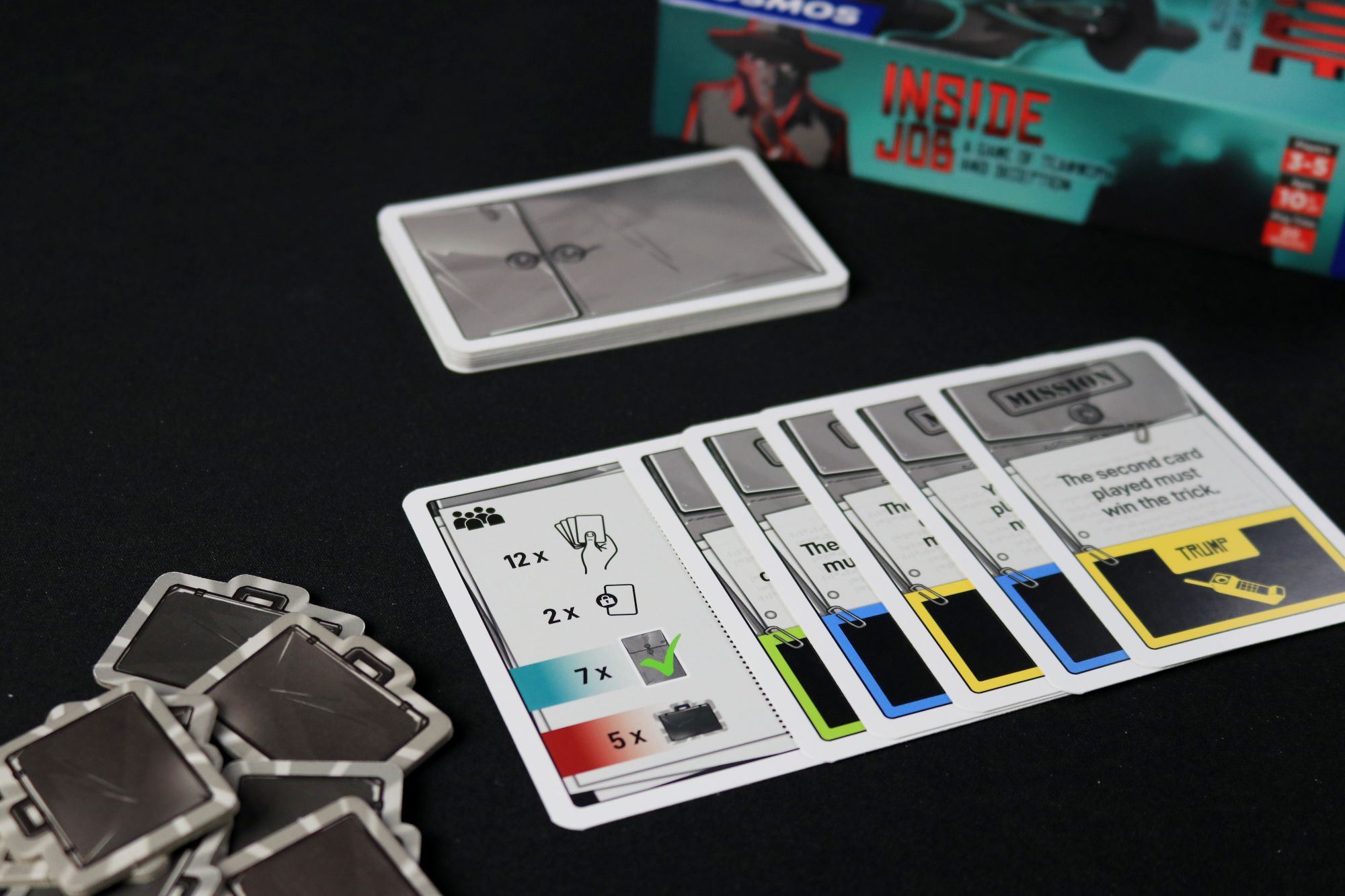
Get the Intel
Inside Job acts like a normal trick-taking game where a player leads with a suit and others have to follow with the same suit if they have it.
Winning a trick and and completing a mission are often not the same thing. A mission card may say “The second player must play the highest card this round”. As long as the second player plays the highest numbered card, that mission is a success! Even if another player wins the trick, because they played a trump suit, the mission still counts.
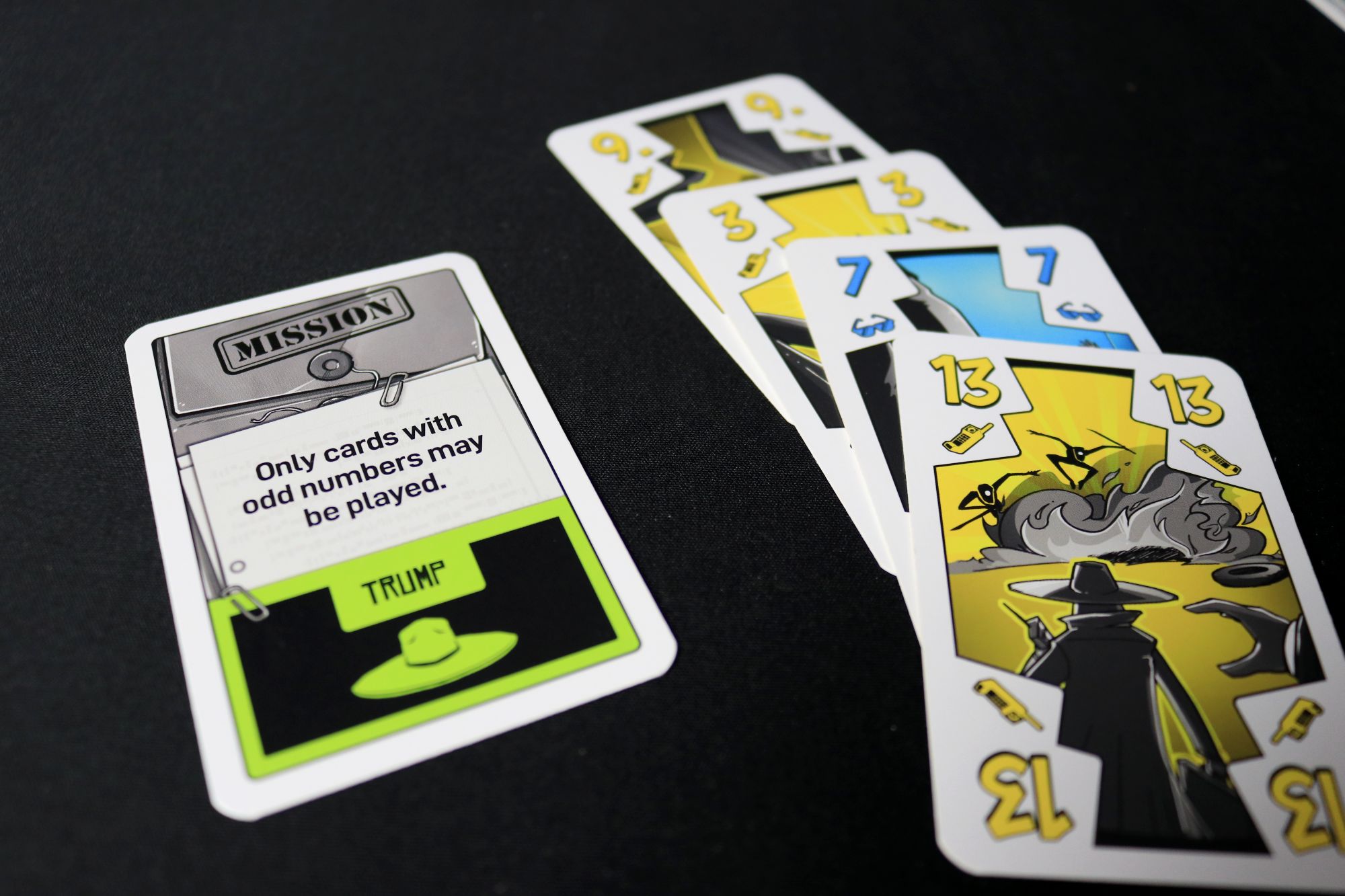
Players earn “intel” tokens each time they win a trick. The insider needs a specific number of these intel tokens to win the game and reveal that they were the saboteur that game.
Each mission card will dictate the trump suit for the round, resulting in different suits of cards taking priority. This keeps players really engaged even when they have a bad hand of cards. One suit can be worthless on one turn then become the most important on the next.
Deception at the Table
When the agents accomplish a specific number of missions, they win. When the insider earns a specific number of intel tokens, they win. If the end of the game comes and neither have won, everyone at the table votes on who they believe is the insider. If the insider doesn’t receive the majority of the votes, they win.
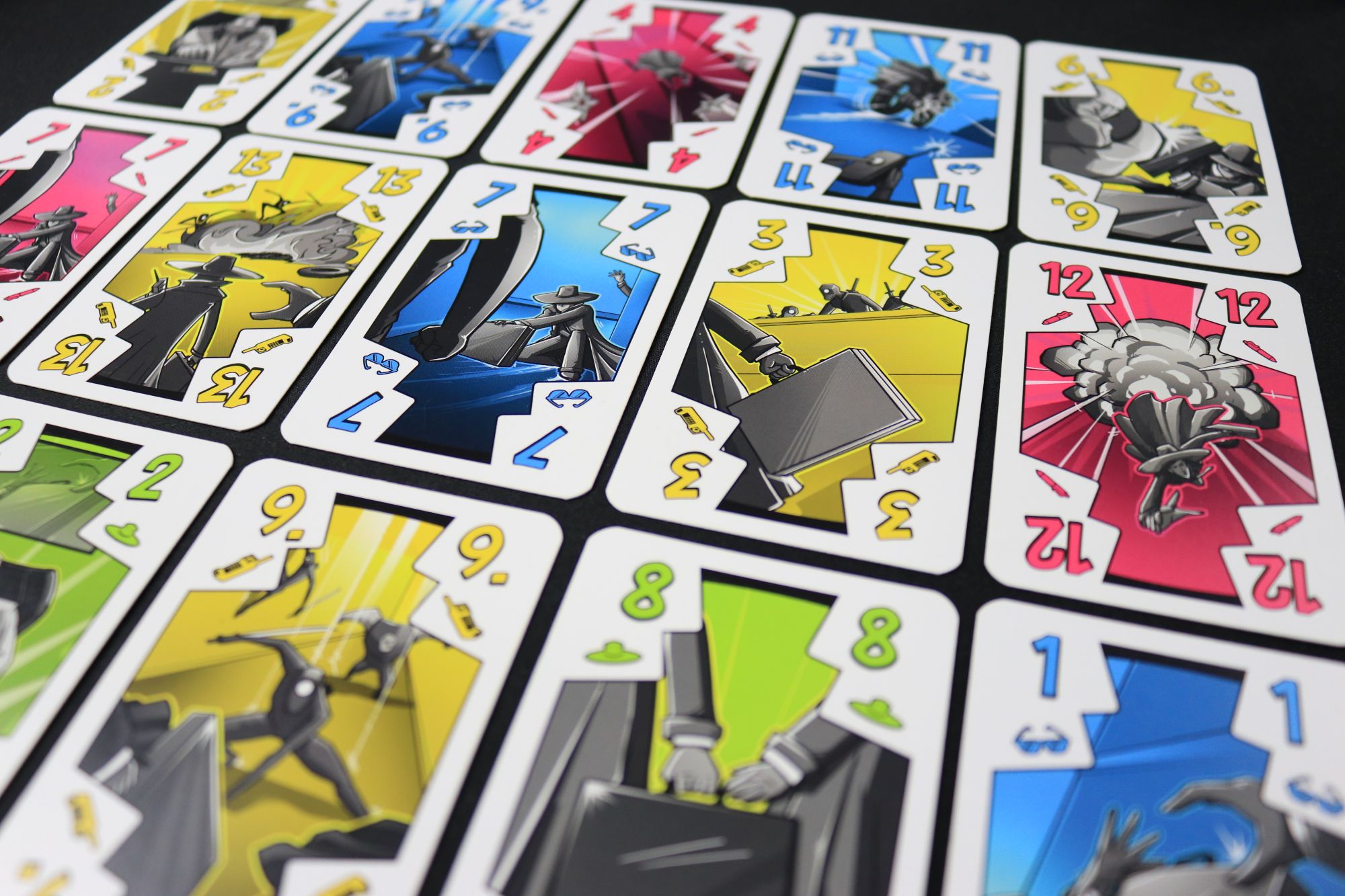
The insider has to strike a balance of winning tricks and still contributing to missions in a meaningful way to go undetected. Every time we play Inside Job, the first person to have three intel tokens is immediately under fire. Accusations fly, players give excuses and no one can be trusted. Playing Inside Job with the right group is fantastic!
Since the lead player gets to select the new mission card from two that are drawn, the insider can choose missions that lean in their favor.
The insider also gets to bend the rules and play any suit they want on their turn. This makes trump suits more accessible as long as you are good to deceiving the table. At each player count, there will be 2 cards in your hand that never get played. The insider can easily hide two cards that they have lied about during the round.
Once players understand the basics, there are loads of ways to change the game. Inside Job has more than half a dozen additional identity cards that can be added to the game. Some of these make the role of the insider more difficult or can give an agent more abilities. These variants keep the game fresh and a lot of fun once you’ve played over-and-over.
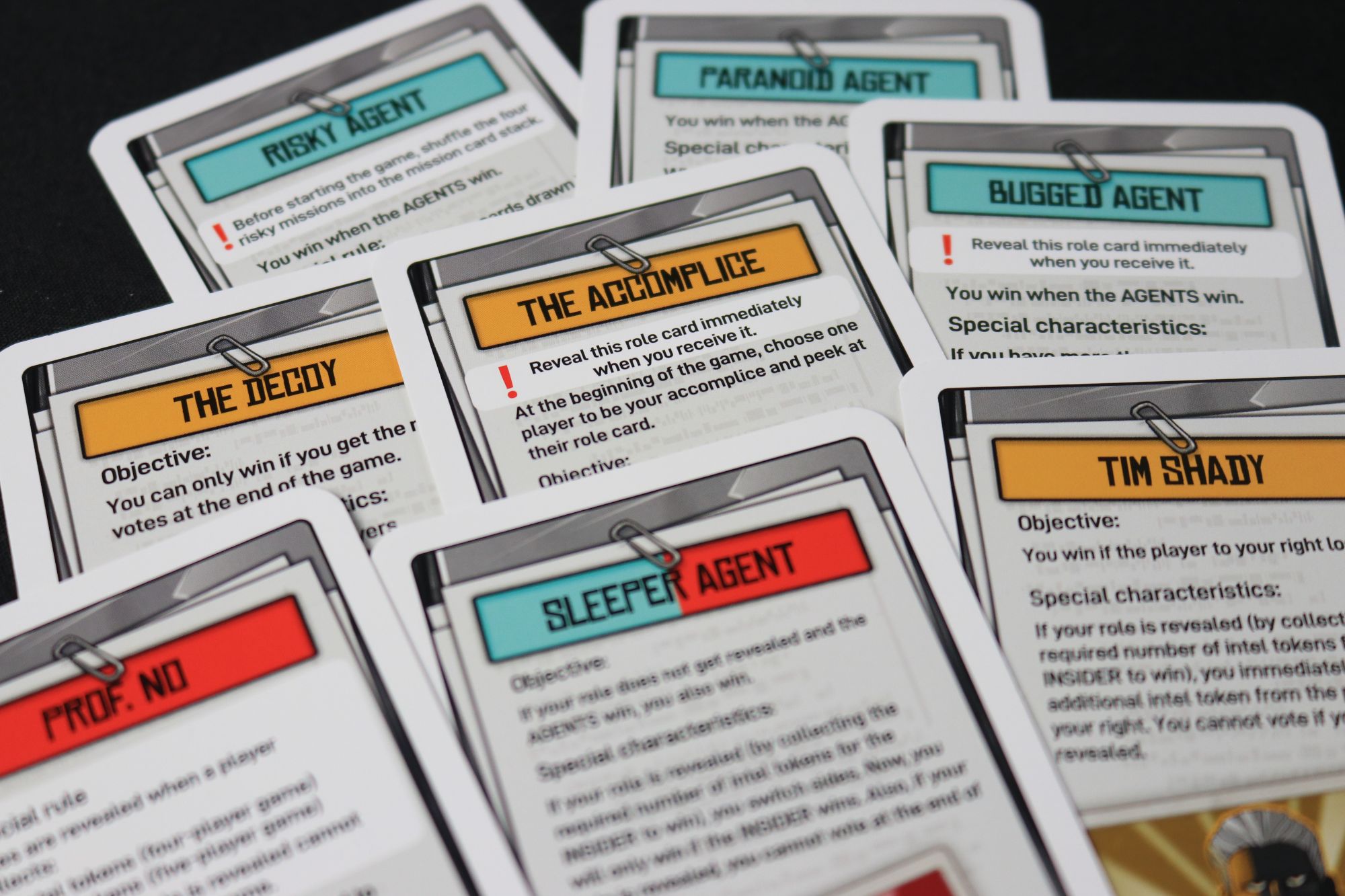
A Trick-Taking Party
Inside Job is a blast to play at 4 and 5 players. It’s an easy game to get our teenage kids to play since they already love games like One Night Ultimate Werewolf, Night of the Ninja and Hail Hydra. With a quick 2-3 minute teach, it’s an easy game to introduce to new players.
Our family has fallen in love with Inside Job in a way that we didn’t with The Crew. It’s so interactive as players make accusations and the table talk ramps up each round.
After more than a dozen plays, there are some things that Inside Job struggles with. Players need to understand that winning a trick and completing a mission are two separate things, even though they can overlap. Every time we teach someone new, someone asks “Why did that person earn an intel token?”.
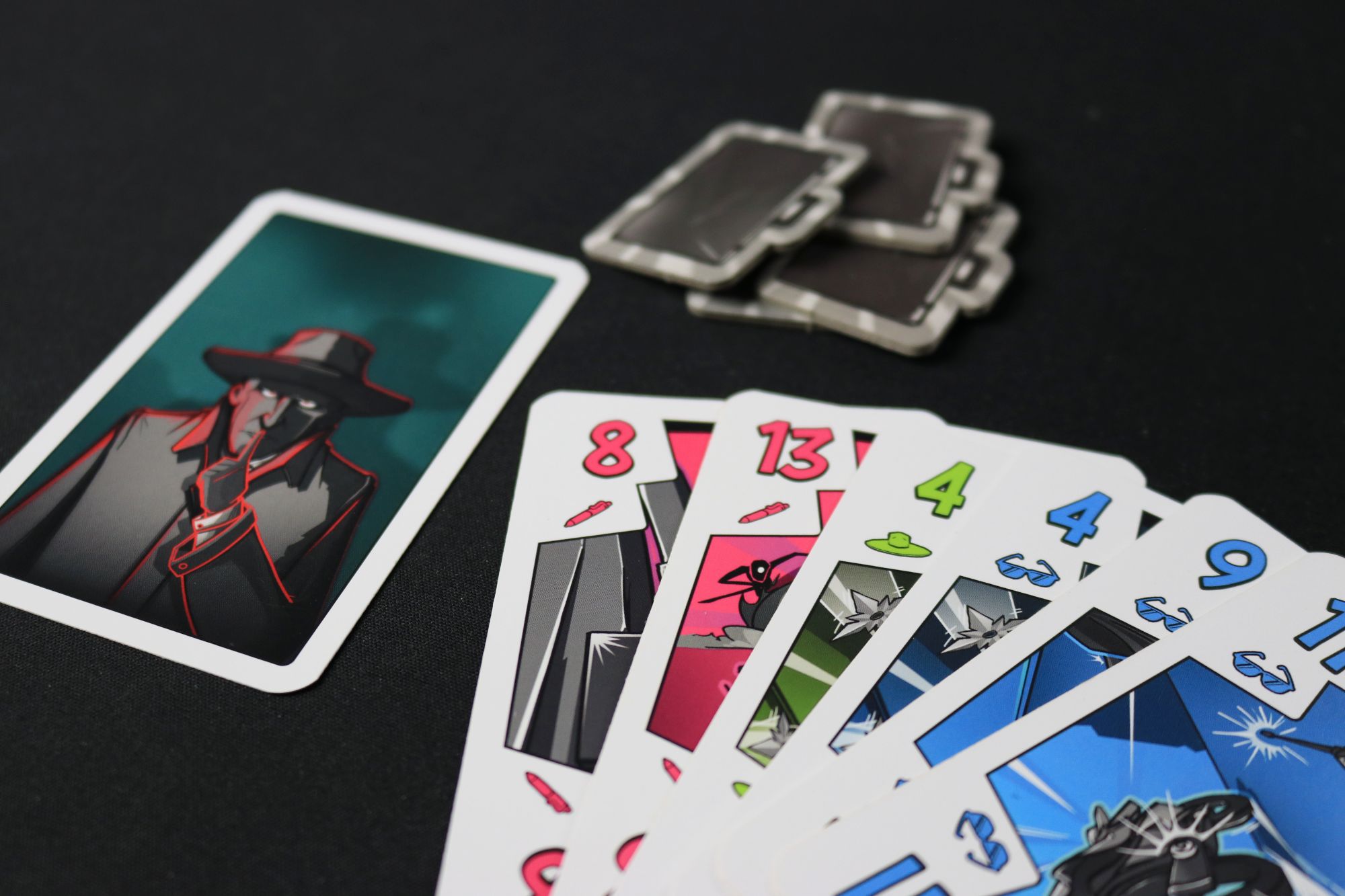
The mission cards dictate a specific thing that has to be true to complete the mission. This is not the same as winning a trick. A trick is won by the player who plays the highest card in the suit or in the trump suit. Just like most basic trick-taking games. Players are thrown off because these two criteria are disconnected. It takes a game or two for most players to get this, but once they understand, it’s smooth sailing in future games.
While the game does support 2 (with a dummy player) and 3 players, it’s not my favorite due to the lack of tension. At 4 and 5 players, accusations fly, lots of cards are in play and the insider has more opportunities to hide. I’ll always play this game at 4 or 5 while I would need the right people to play at 3.
I keep saying that “we don’t need another trick-taking game”, but then games like Inside Job hit the market. Inside Job is a great blend of two classic game mechanics that work so well together.
You can purchase a copy of Inside Job through the KOSMOS webstore or online through Amazon today.
This game was provided to us by the publisher for review. Read more about our review policies at One Board Family.
Highs
- Co-operative gameplay with a traitor
- Constantly shifting trump suit works well
- Variant identity cards are a lot of fun for seasoned players
- Game shines at 4 and 5 players
Lows
- Usually takes a game or two for new players
- Mission cards can feel very repetitive
Complexity

Time Commitment

Replayability



